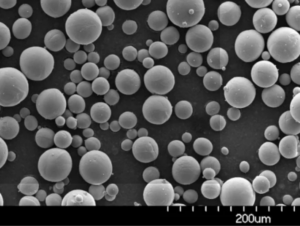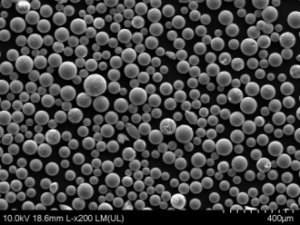究極のガイドへようこそ プラズマガスアトマイザー!科学と最先端技術が出会い、無数の産業で使用される微細な金属粉を製造するプラズマ・ガスアトマイゼーションの魅力的な世界に深く飛び込みたいとお考えでしょう。この記事では、プラズマガスアトマイザーの組成や特性から、用途や仕様に至るまで、あらゆる側面からご紹介します。複雑なトピックを理解しやすくするため、例え話や比喩、くだけた口調を交えた魅力的な旅にご期待ください。
プラズマガスアトマイザーの概要
プラズマガス噴霧は、微細な金属粉末を製造するために使用される技術である。固体の金属を小さな液滴の霧に変え、それが固化して粉末粒子になる機械を想像してみてほしい。それがプラズマ・ガス・アトマイザーだ。高エネルギーのプラズマ・トーチを使って金属を溶かし、ガスの流れによって霧状にして液滴にする。この液滴は急速に冷却され、微細で球状の金属粉末を形成する。
この方法は、アディティブ・マニュファクチャリング(3Dプリンティング)、航空宇宙、バイオメディカルエンジニアリングなど、高品質の金属粉を必要とする産業で人気がある。製造される金属粉末は、均一なサイズ、高純度、優れた流動性で珍重される。
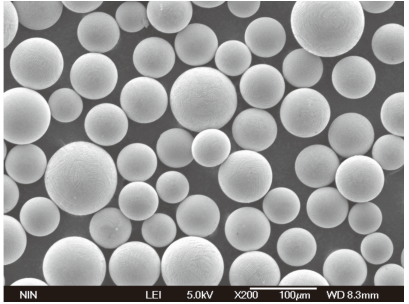
製造される金属粉末の種類
ここでは、プラズマガスアトマイザーによって製造される金属粉末の具体的なモデルをリストアップし、それぞれ独自の特性と用途を紹介する:
| 金属粉モデル | 構成 | プロパティ | 用途 |
|---|---|---|---|
| Ti-6Al-4V | チタン合金 | 高強度、耐食性 | 航空宇宙、生物医学インプラント |
| Inconel 718 | ニッケル・クロム合金 | 高温、耐酸化性 | タービンブレード、航空宇宙 |
| 316Lステンレス鋼 | 鉄、クロム、ニッケル | 耐食性、生体適合性 | 医療機器、海洋アプリケーション |
| AlSi10Mg | アルミニウム・シリコン・マグネシウム合金 | 軽量、高熱伝導性 | 自動車、航空宇宙 |
| CoCrMo | コバルト・クロム・モリブデン合金 | 耐摩耗性、高強度 | 歯科用インプラント、整形外科用器具 |
| ニッケル | ニッケル-コバルト-クロム-アルミニウム-イットリウム | 熱安定性、耐酸化性 | 遮熱コーティング |
| CuSn10 | 銅錫合金 | 高い導電性、耐摩耗性 | 電気部品、ベアリング |
| フェニルコ | 鉄-ニッケル-コバルト合金 | 磁気特性 | エレクトロニクス、磁気応用 |
| Ti-48Al-2Cr-2Nb | チタン・アルミニウム・クロム・ニオブ合金 | 高温、軽量 | 航空宇宙、自動車 |
| Al7075 | アルミニウム-亜鉛-マグネシウム-銅合金 | 高い強度対重量比 | 航空宇宙、スポーツ用品 |
構成 プラズマガスアトマイザー 金属粉末
プラズマガスアトマイザーで製造される金属粉末の組成は、特定の合金とその用途によって大きく異なります。例えば、一般的なチタン合金であるTi-6Al-4Vは、チタン、アルミニウム、バナジウムで構成され、強度、重量、耐食性のバランスに優れています。一方、ニッケル・クロム合金のインコネル718は、高温に耐え、酸化に強いことで有名です。
詳細構成表
| 金属粉モデル | 元素組成 |
|---|---|
| Ti-6Al-4V | Ti(90%)、Al(6%)、V(4) |
| Inconel 718 | Ni (50-55%)、Cr (17-21%)、Fe (バランス)、Nb (4.75-5.5%)、Mo (2.8-3.3%) |
| 316Lステンレス鋼 | Fe(バランス)、Cr(16~18%)、Ni(10~14%)、Mo(2~3) |
| AlSi10Mg | Al (バランス), Si (9-11%), Mg (0.2-0.45%) |
| CoCrMo | Co(バランス)、Cr(26~30%)、Mo(5~7) |
| ニッケル | Ni(バランス)、Co(17~23%)、Cr(12~19%)、Al(5~11%)、Y(0.2~0.6) |
| CuSn10 | 銅(バランス)、錫(9-11) |
| フェニルコ | Fe(バランス)、Ni(29~30%)、Co(10~20) |
| Ti-48Al-2Cr-2Nb | Ti (バランス), Al (48%), Cr (2%), Nb (2%) |
| Al7075 | Al(バランス)、Zn(5.1~6.1%)、Mg(2.1~2.9%)、Cu(1.2~2.0) |
プラズマガスアトマイザー金属粉末の特性
これらの金属粉末の特性に関しては、粒度分布、形態、純度、流動性など、いくつかの要素が関わってくる。これらを分解してみよう:
- 粒度分布:プラズマ・ガスアトマイズは通常、均一な粒度分布を持つ金属粉末を生成します。これは、一貫性が鍵となる3Dプリンティングのような用途には極めて重要です。
- 形態学:製造される粒子は一般に球状であり、積層造形における粉末床溶融のようなプロセスに不可欠な流動性と充填密度の向上に寄与する。
- 純度:高エネルギープラズマ環境は、他の元素や酸化物による汚染を最小限に抑え、金属粉末の高純度化を保証する。
- 流動性:球状の粒子は不規則な形状のものよりも流れやすく、材料の精密なコントロールが必要な用途に最適です。
プロパティ・テーブル
| プロパティ | 説明 |
|---|---|
| 粒子サイズ | 通常10~100ミクロン |
| 形状 | ほとんどが球形 |
| 純度 | >99パーセント |
| 流動性 | 素晴らしい |
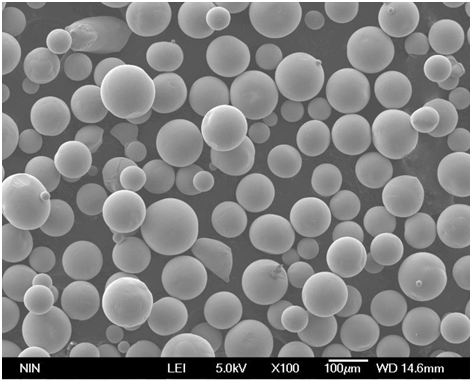
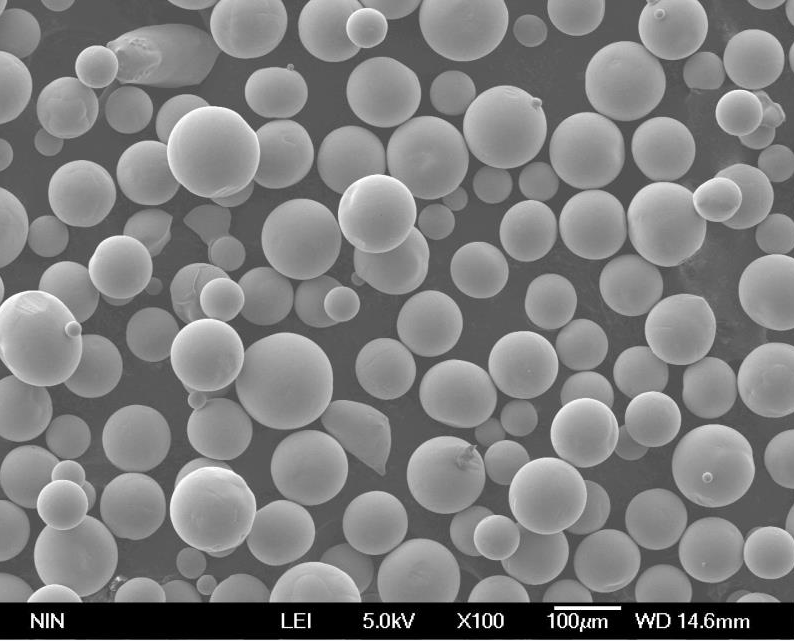

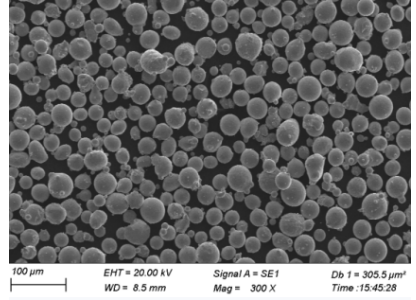

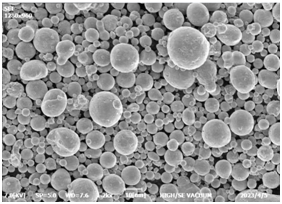
応用例 プラズマガスアトマイザー 金属粉末
プラズマガスアトマイザーで製造される金属粉末は、幅広い産業分野で応用されている。主な用途をいくつか紹介しよう:
アプリケーション表
| 産業 | 申し込み | 金属粉モデル |
|---|---|---|
| 航空宇宙 | タービンブレード、構造部品 | インコネル718、Ti-6Al-4V |
| バイオメディカル | インプラント、歯科補綴 | CoCrMo、Ti-6Al-4V |
| 自動車 | エンジン部品、軽量構造 | AlSi10Mg、Ti-48Al-2Cr-2Nb |
| エレクトロニクス | 磁性材料、導電性部品 | FeNiCo、CuSn10 |
| 付加製造 | プロトタイプと部品の3Dプリント | 全モデル |
仕様、サイズ、等級、規格
特定の用途のために金属粉末を選択する場合、その仕様、サイズ、等級、規格を考慮することが極めて重要です。これらの要素は、粉末が性能と安全性に関して必要な要件を満たしていることを保証します。
仕様表
| 金属粉モデル | サイズ範囲 | グレード | スタンダード |
|---|---|---|---|
| Ti-6Al-4V | 15-45ミクロン | グレード5 | ASTM F2924 |
| Inconel 718 | 20-63ミクロン | UNS N07718 | AMS 5662 |
| 316Lステンレス鋼 | 15-45ミクロン | グレード316L | ASTM F138 |
| AlSi10Mg | 20~60ミクロン | グレードA | ISO 3522 |
| CoCrMo | 10~50ミクロン | ASTM F75 | ASTM F75 |
| ニッケル | 10~80ミクロン | カスタムグレード | ISO 15156-3 |
| CuSn10 | 15-63ミクロン | CW453K | 1982年 |
| フェニルコ | 20-100ミクロン | カスタムグレード | IEC 60404-8-6 |
| Ti-48Al-2Cr-2Nb | 20~45ミクロン | カスタムグレード | AMS 4822 |
| Al7075 | 15-63ミクロン | グレード 7075 | ASTM B211 |
サプライヤーと価格詳細
金属粉末の調達に関しては、数多くのサプライヤーが様々な製品を提供している。価格は材料、数量、品質によって大きく異なります。
サプライヤーと価格表
| サプライヤー | 金属粉モデル | 価格(kgあたり) |
|---|---|---|
| AP&C | Ti-6Al-4V | $300 – $400 |
| プラクセア・サーフェス・テクノロジー | Inconel 718 | $200 – $350 |
| サンドビック | 316Lステンレス鋼 | $100 – $200 |
| LPWテクノロジー | AlSi10Mg | $80 – $150 |
| カーペンター添加剤 | CoCrMo | $250 – $400 |
| スタルクHC | ニッケル | $300 – $500 |
| ヘガネス | CuSn10 | $50 – $100 |
| ケナメタル | フェニルコ | $150 – $250 |
| ATI粉末冶金 | Ti-48Al-2Cr-2Nb | $400 – $600 |
| バリメット | Al7075 | $100 – $200 |
長所と短所 プラズマガスアトマイザー 金属粉末
プラズマガスアトマイザー金属粉末の利点と限界を理解することは、十分な情報に基づいた意思決定に役立ちます。
比較表
| アスペクト | メリット | 制限事項 |
|---|---|---|
| 粒子サイズ | 一様分布 | サイズに制限がある場合がある |
| 形状 | 球状粒子 | 生産コストの上昇 |
| 純度 | 高純度レベル | 厳しい管理が必要 |
| 流動性 | 優れた流動特性 | 湿度に影響されることがある |
| 用途 | 幅広い用途 | 高価な金属もある |
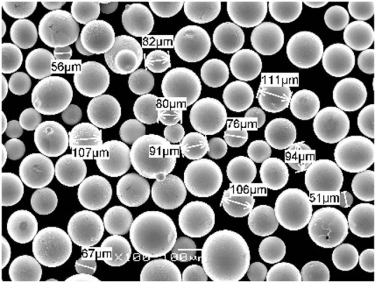
よくある質問
| 質問 | 回答 |
|---|---|
| プラズマガス霧化とは? | プラズマ・ガス・アトマイズは、プラズマ・トーチを使って金属を溶かし、微細な液滴にして微粒化し、球状の粉末に凝固させるプロセスである。 |
| なぜ球状の金属粉が好まれるのか? | 球状粉末は流動性と充填密度が高く、積層造形のようなプロセスには極めて重要である。 |
| これらの金属粉の一般的な用途は? | 航空宇宙、生物医学インプラント、自動車部品、電子機器などに使用されている。 |
| 粒子径はアプリケーションにどのような影響を与えますか? | 小さくて均一な粒子は、製造工程における精度と一貫性を向上させる。 |
| 金属粉末のコストに影響を与える要因は何ですか? | 素材の種類、製造方法、純度、供給元はすべて価格に影響する。 |
| プラズマ・ガスアトマイゼーションに環境面での懸念はありますか? | このプロセスは比較的クリーンだが、エネルギー消費と原料調達が環境に影響を与える可能性がある。 |
| 用途に合った金属粉末を選ぶには? | 材料特性、用途要件、コストを考慮する。サプライヤーに相談することも指針になる。 |
| 金属粉末の組成をカスタマイズできますか? | はい、多くのサプライヤーが、特定のニーズを満たすための特注組成物を提供しています。 |
| プラズマ・ガスアトマイズの主な利点は何ですか? | より高い純度、球状粒子、均一な粒度分布が主な利点である。 |
| これらの金属粉はどこで購入できますか? | AP&C、Praxair、Sandvikなど数多くのサプライヤーが幅広い金属粉末を提供している。 |
結論
結論として、プラズマガスアトマイザーは、様々な先端製造プロセスで使用される高品質の金属粉末を製造する上で重要な役割を果たしている。航空宇宙、バイオメディカル、自動車、エレクトロニクスのいずれの分野においても、これらの粉末の組成、特性、用途を理解することは、プロジェクトの成功に大きく影響します。この包括的なガイドを読めば、プラズマガスアトマイザーの世界を自信を持ってナビゲートするための知識が得られます。製造に幸あれ!
